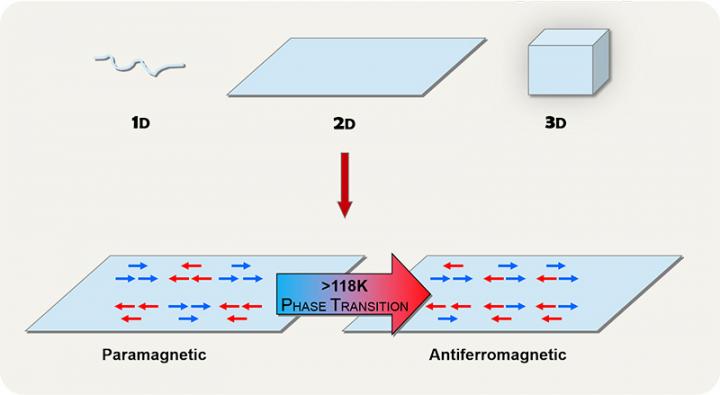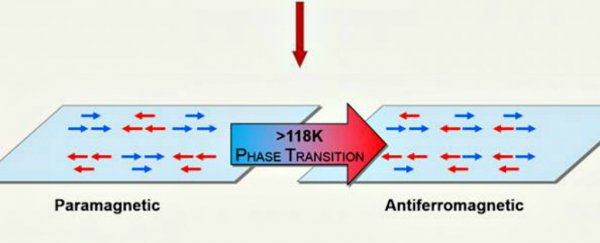Physicists have finally demonstrated the magnetic behaviour of a special class of 2D materials in the lab, delivering the first experimental proof of a widely accepted hypothesis proposed more than 70 years ago.
The hypothesis, known as the Onsager solution, explains how certain types of 2D materials - materials that are just one-atom thick, such as graphene - go through magnetic phase transitions. Just like the phase transition that takes H20 from ice to liquid water, a magnetic phase transition describes how a material loses its magnetism as temperatures heat up.
But despite the fact that this process was described more than 70 years ago by Nobel Prize-winning chemist Lars Onsager - and has been the basis of decades of research ever since - up until now, no one had ever actually confirmed it was real in the lab.
"The Onsager solution is taught on every advanced statistical mechanics course. That's where I learned this problem," said Je-Geun Park, from the Institute for Basic Science in South Korea.
"However, when I discovered much later that it has not been tested experimentally with a magnetic material, I thought it was a shame for experimentalists like me, so it was natural for me to look for a real material to test it."
If you're not familiar with the Onsager solution, basically it's a hypothesis that explains how 2D materials go through phase transitions - a change in the way their molecules are ordered that affects their properties.
The best known phase transitions are the ones from solid to liquid and liquid to gas, which we all learn about in high school. But there are also magnetic phase transitions. That's because certain 3D materials, such as iron manganese and nickel oxide, are magnetic because of how their electrons' spins line up - something known as antiferromagnetism.
The spin of an electron can be thought of like a tiny magnet which faces a specific direction, and, at extremely low temperatures, these spins tend to align in a particular order making the material magnetic.
But above a certain temperature, these spins lose their alignment and become random, which makes them no longer magnetic, or paramagnetic.
That point of transition from magnetism to non-magnetism is known as a magnetic phase transition - even 3D magnets like the kind you use to pick up paper clips become non-magnetic above a certain point. It's the same kind of phase transition as ice melting into liquid, which occurs thanks to ice losing its rigid internal structure of molecules as temperatures heat up.
So we know what happens in 3D materials, but what about 2D materials? And what about individual molecules, or 1D materials?
This is what physicist Wilhelm Lenz asked his student Ernst Ising around a century ago, and in 1925 Ising was able to conclude that 1D materials - individual molecules - don't undergo phase transitions. It only happens when molecules are joined together into a material.
But the answer was a lot harder when it came to 2D materials. It wasn't until 1943 that chemist Lars Onsager put forward a solution to the problem - he calculated that 2D materials do undergo phase transition, including magnetic phase transition, a hypothesis that has greatly influenced physics since then.
The only thing is, up until now, no one had ever tested that in a real 2D magnetic material.
In order to prove Onsager right once and for all, Park and his team produced magnetic crystals of iron trithiohypophosphate (FePS3). They then peeled layers off this crystal using sticky tape to form 2D sheets of the material - just like how you can use tape to get single layers of graphene from graphite.
Using a technique called Raman spectroscopy, the team measured tiny vibrations inside the material to figure out how magnetic it was at certain temperatures - the more vibrations, the less magnetic the material was.
In the 3D crystal, electrons' spins were ordered (antiferromagnetic) below 118 Kelvin (–155 degrees Celsius), and became disordered (paramagnetic) above that temperature.
 IBS
IBS
"We conclude that 3D and 2D FePS3 have the same signature of the phase transition visible in the Raman spectrum," said Park.
"Showing magnetic phase transition with this tour-de-force experiment is a beautiful test for the Onsager solution."
The research has been published in Nano Letters.
